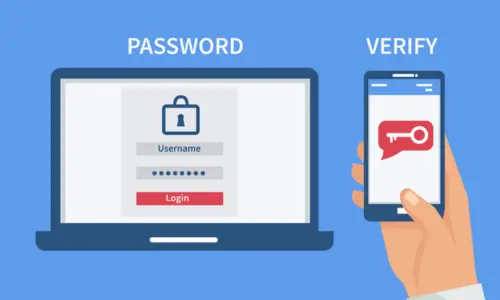Data Privacy in the Digital Age: How to Protect Your Personal Information
In the digital age, where personal information is frequently shared and stored online, safeguarding your data privacy has become more critical than ever. With increasing cyber threats, data breaches, and privacy invasions, understanding how to protect your personal information is essential. This guide will provide you with actionable strategies and best practices to enhance your data privacy and ensure your personal information remains secure.
1. Understanding Data Privacy
In today’s digital landscape, personal data is often collected by websites, apps, and online services, making it crucial to understand the risks and measures to safeguard your privacy.
Key Concepts in Data Privacy:
- Personal Data: Information that can identify an individual, such as name, email address, phone number, and financial details.
- Data Collection: How organizations gather data, often through forms, cookies, and tracking technologies.
- Data Usage: How collected data is used, including marketing, analytics, and service personalization.
- Data Sharing: Sharing data with third parties, which can include partners, advertisers, and service providers.
2. Best Practices for Protecting Your Personal Information
Implementing best practices for data privacy can significantly reduce the risk of your personal information being exposed or misused. Here are some essential strategies:
1. Use Strong, Unique Passwords:
- Password Complexity: Create passwords that are at least 12 characters long and include a mix of letters, numbers, and special characters.
- Avoid Reuse: Use different passwords for different accounts to prevent a breach in one account from compromising others.
2. Enable Two-Factor Authentication (2FA):
- Additional Security Layer: 2FA requires an additional verification step, such as a code sent to your phone or an authentication app, to access your accounts.
- Activation: Enable 2FA on all accounts that support it, especially for email, social media, and financial accounts.
3. Be Cautious with Personal Information:
- Limit Sharing: Only provide personal information when necessary and be cautious about sharing sensitive data online.
- Privacy Settings: Adjust privacy settings on social media and online services to control who can see your information.
4. Use Encrypted Communication:
- Secure Messaging: Use messaging apps that offer end-to-end encryption to protect the content of your communications from unauthorized access.
- Secure Emails: Consider using email services that provide encryption options to secure your email communications.
5. Regularly Update Software and Apps:
- Security Updates: Keep your operating system, software, and apps up to date to ensure you have the latest security patches and fixes.
- Automatic Updates: Enable automatic updates when possible to ensure you receive updates promptly.
6. Be Wary of Phishing Scams:
- Recognize Phishing Attempts: Be cautious of emails, messages, or calls that request personal information or direct you to suspicious websites.
- Verify Requests: Always verify the authenticity of requests for personal information by contacting the organization directly through official channels.
3. Protecting Your Data on Social Media
Social media platforms are a common source of personal data collection and sharing. Here’s how to protect your privacy on social media:
1. Review Privacy Settings:
- Account Visibility: Set your profile and posts to private or restricted to limit who can view your information.
- App Permissions: Review and manage permissions for third-party apps linked to your social media accounts.
2. Avoid Oversharing:
- Limit Personal Details: Avoid sharing sensitive information, such as your home address, phone number, or financial details, on social media.
- Think Before Posting: Consider the potential implications of what you share and how it may be used by others.
3. Monitor Account Activity:
- Check for Suspicious Activity: Regularly review your account activity and notifications for any unauthorized or unusual behavior.
- Report Issues: Report any suspicious activity or security concerns to the social media platform’s support team.
4. Safeguarding Your Data on Mobile Devices
Mobile devices are a common target for cyber-attacks and data breaches. Here are steps to protect your data on smartphones and tablets:
1. Use Device Encryption:
- Encryption Activation: Enable encryption on your mobile device to protect data in case it is lost or stolen.
- Device Settings: Check your device’s settings to ensure encryption is turned on.
2. Install Trusted Apps:
- App Sources: Download apps only from trusted sources, such as official app stores, and review app permissions before installation.
- App Updates: Keep your apps updated to ensure you have the latest security features and fixes.
3. Enable Remote Wiping:
- Find My Device: Use built-in features like Find My iPhone or Find My Device (Android) to locate, lock, or erase your device remotely if it is lost or stolen.
5. Managing Data Breaches
In the event of a data breach, taking prompt action can minimize potential damage:
1. Change Passwords:
- Affected Accounts: Change passwords for accounts that may have been compromised.
- Update Other Accounts: If you use the same password across multiple accounts, update those passwords as well.
2. Monitor Accounts:
- Watch for Fraud: Keep an eye on your financial statements and online accounts for signs of unauthorized transactions or activities.
- Credit Monitoring: Consider using credit monitoring services to track any unusual credit activity.
3. Notify Relevant Parties:
- Report Breaches: Notify the affected organizations or service providers about the breach to receive further guidance and support.
- Legal Assistance: In some cases, seek legal assistance if the breach results in significant financial loss or identity theft.
6. Understanding Data Privacy Laws
Familiarizing yourself with data privacy laws can help you understand your rights and how to protect your personal information:
1. General Data Protection Regulation (GDPR):
- Scope: GDPR is a comprehensive data protection regulation in the European Union that applies to organizations handling personal data of EU residents.
- Rights: Includes rights to access, correct, and delete personal data, as well as to object to data processing.
2. California Consumer Privacy Act (CCPA):
- Scope: CCPA is a data privacy law in California that provides residents with rights related to their personal data.
3. Other Regional Laws:
- Local Regulations: Be aware of other data privacy regulations in your region or country that may impact how your data is protected and managed.
Conclusion
By implementing best practices for data privacy, being cautious with online activities, and understanding relevant data privacy laws, you can significantly enhance your data security and safeguard your personal information.
Taking proactive steps to secure your data will help you navigate the digital world with greater confidence, knowing that your privacy is well-protected. Stay informed about emerging threats and continuously update your security practices to stay ahead of potential risks.







